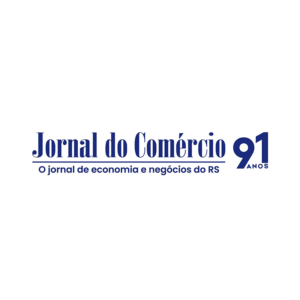Carolina Santos Pereira Leite
Lawyer at Marcos Martins Advogados
I INTRODUCTION
The financial market and the capital market are objects that the law protects through regulatory means, whether state (laws, decrees, provisional measures, resolutions) or private.
The state monitors and creates mechanisms to disapprove and combat situations that could lead to market imbalance, either preventively, when it avoids the market being contaminated by a breach of trust, or by repressive means, when the market adapts to the situations that have occurred.
Law No. 4.728/65, which regulated the Capital Market, created rules to encourage national companies to go public, delegating regulatory powers over the capital market to the National Monetary Council (CMN) and the Central Bank (BC)[1].
Among its regulatory functions, the CMN was delegated the role of disciplining the activities of stock exchanges, as well as establishing rules for the operations of financial institutions in order to preserve soundness and credit.
This scenario already demonstrated a certain willingness on the part of the state to separate the regulatory function of credit operations from the Central Bank and capital market operations from the future Securities and Exchange Commission.
Subsequently, with the Central Bank being given responsibility for regulating both the financial and capital markets, there was a lack of flexibility and an excess of powers which slowed down the development of the market; in this context, the Securities and Exchange Commission (CVM) was set up with the aim of regulating, supervising and punishing infractions committed within the capital market.
II MARKET SELF-REGULATION
The term “ self-regulation ‘ has its historical origins in the organized medieval groups that emerged from the ’free cities”[2] in the 11th and 12th centuries, which had the power to legislate their own laws and maintain courts of justice, with their historical evolution into professional corporations[3].
Self-regulation allows private entities to interfere in certain economic situations in order to adapt them to pre-established market models, and they can even apply sanctions through their own mechanisms.
Self-regulation is a private model, organized by people who work in the market and which makes business supervision less bureaucratic. On the other hand, the legal model provides for market regulation through state intervention, with part of the regulatory power delegated to the market itself, i.e. the state itself drives the existence of self-regulation, leaving only the act of supervision/sanctioning to itself.
The self-regulatory system, being private and free from intervention, is more easily alterable, which allows for more agility and better monitoring of real situations, but it is important to have a balance between its freedom and flexibility.
Most self-regulatory entities are interested in maintaining transparency in their activities, demanding compliance with their rules from their agents, consolidating standards of conduct that guarantee an ethical model for products and services through rules and policies, which are favorable to their application.
By promoting market security, self-regulation tends to increase investment by demonstrating that it has control over its own actions, resulting in a more economically advantageous system.
III. CVM’S REGULATORY POWER
The CVM is a federal agency linked to the Ministry of Finance, with no hierarchical subordination, which has the status of a regulatory body and must supervise and control publicly traded companies, as well as the public issuance of shares and other securities; it also has the function of punishing illegal acts carried out by company managers.
Law No. 6.385, of December 7, 1976, which regulates the securities market and established the CVM, gave the latter the important regulatory power to discipline, standardize and supervise activities concerning the securities market in Brazil[4]. Article 8, item I of the aforementioned law establishes the CVM’s competence to regulate, with the support of the National Monetary Council, matters within the scope of the securities market.
Being governed by constitutional and legal rules, as well as by the principle of reasonableness and proportionality, the CVM’s regulatory function is extremely important because it is close to the events taking place in the economic sector, thus being able to achieve results in a more agile and efficient manner and is extremely important for the regular development of the capital market.
In order to carry out its role, the CVM issues instructions, normative acts and various instruments related to self-regulation policy. These powers are granted to the CVM because they are based on the search for reliability and efficiency in its matters, which are of special technical complexity, so that the market can develop significantly in line with its current needs.
IV REGULATORY POWER OF THE STOCK EXCHANGE
It was in the 1990s that Brazil began to invest in securities, given the evolution of the Brazilian economy and the opening up to foreign markets, which brought foreign investors to our country, as well as greater action by domestic investors at an international level[5].
The domestic market became more attractive and the volume of business on the Brazilian stock exchanges grew, as did access to international stock exchanges, which became easier due to lower costs.
In this scenario, the former São Paulo Stock Exchange (Bovespa) saw the need to boost the domestic market through technology that brought more training to the system and better infrastructure for trading. In addition, there was an increase in the number of companies listed on the Bovespa in various sectors, as they began to see the capital market as a means of raising funds from investors and financing investment projects, all in order to become more competitive in the market.
Thus, moving to the structure of the global market, on August 28, 2007, the São Paulo Stock Exchange underwent a corporate restructuring through the demutualization process, in which it went public through one of the most hotly contested public offerings of all time, becoming a publicly traded corporation.
Later, with the demutualization and public offering of the Mercantile and Futures Exchange, the two exchanges merged to form BM&FBovespa S.A.
With its corporate reorganization, the exchange took advantage of Instruction 461 of the Securities and Exchange Commission to separate some of its functions, such as administrative and regulatory, thus creating Bovespa Supervisão de Mercado (BSM), a non-profit company with the power to supervise the stock exchange market in Brazil[6].
BM&FBovespa manifests its supervisory power by analyzing, supervising, investigating and judging acts committed against the market’s regulatory and self-regulatory standards, striving for high ethical standards in the stock exchange and organized over-the-counter markets[7]. The Exchange investigates suspicious and irregular actions in the capital markets, and may even impose sanctions under its supervisory powers, in accordance with Law 6.385/76.
The BSM also acts through administrative proceedings to reimburse losses suffered by investors as a result of the actions or omissions of administrators, employees, operators and agents of participants or agents in relation to the intermediation of transactions with assets, securities and securities carried out on the BM&FBovespa Exchange market, with a view to protecting the integrity of the market, managing the Mechanism for Reimbursement of Losses (MRP)[8].
The Exchange plays a fundamental role in guaranteeing the transparency and credibility of the stock market and, even though it is supervised by regulatory bodies, the Exchange transfers certain rules for conducting business and corporate governance practices to its members.
Under the structure of a corporation, the Exchange seeks financial results that meet the growing expectations of the market, which could, in theory, induce it to favor the promotion of its shares to the detriment of the necessary and rigorous supervision of the market.
V – CONCLUSION
The multiple forms of regulation and versions of “best practices” will continue to evolve in the regulation and will continue to be reflected in the social norms and regulatory structural history of each country or market. However, the vigilant operation of the regulator is essential, especially as integration into the global market continues to evolve.
In order to regulate such situations and also prevent the economy from crises and depressions, it is up to the state to intervene, duly limited by law and supervised by the law, in order to demonstrate integrity, competence, diligence and, in pursuit of the objectives of regulation. Just as it is up to the law to implement rules to protect investors by pursuing the credibility of the market and the stock exchange itself, it is through its active presence that trust in these institutions can be achieved.
At the very least, the government must provide an additional level of comfort, but the costs must not exceed the benefits of regulation. In these terms, we have official regulation capable of regulating facts in a downward movement, but we also have the possibility of reversing acts, and an upward movement of the force of the norm, which is often overloaded with self-regulatory processes.
In view of the Stock Exchange’s private activity, and more than that of its dual regulatory and business role, the regulatory structure may need to be rethought, the ideology of the rules modified, the Exchange’s regulatory issues given greater prominence, and the CVM given the appropriate means to take a more active stance, also in relation to the Exchange as a company.
Marcos Martins Advogados is prepared and puts its up-to-date Corporate and Advisory Law team at your disposal to deal with issues relating to the Capital Markets, and is ready to answer questions, presenting creative and safe solutions for its clients and interested parties.
[1] BRAZIL. Law No. 4.728, of July 14, 1965. Disciplines the capital market and establishes measures for its development. Available at: <http://www.planalto.gov.br/ccivil_03/LEIS/L4728.htm>. Accessed on: May 2, 2018.
[2] The trade guilds had self-regulatory power, with the creation of an external legal order for the self-protection of merchants against the wars of feudalism, allowing the development of the bourgeoisie.
[3] ROCHA, Glauco. Self-regulation and disciplinary power of stock, commodities and futures exchanges. Revista Direito & Justiça, Porto Alegre, 2015. Available at: <http://revistaseletronicas.pucrs.br/ojs/index.php/fadir/article/viewFile/21431/13334>. Accessed on: May 3, 2018.
[4] BRAZIL. Law No. 6.385, of December 7, 1976. Provides for the securities market and creates the Securities and Exchange Commission. Available at: <http://www.planalto.gov.br/ccivil_03/LEIS/L4595.htm>. Accessed on: May 3, 2018.
[5] CARVALHO, A. Gledson de. Ascensão e declínio do mercado de capitais no Brasil – a experiência dos anos 90. Economia Aplicada, v. 4, n.3, 2000. FGV Pesquisa. Available at: <https://gvpesquisa.fgv.br/sites/gvpesquisa.fgv.br/files/arquivos/carvalho_-_ascensao_e_declinioo_do_mercado_de_capitais_no_brasil_-_a_experiencia_dos_anos_90.pdf>. Accessed on 02.05.2018.
[6] SECURITIES COMMISSION. CVM Instruction 461, of October 23, 2007. Disciplines regulated securities markets and provides for the constitution, organization, operation and extinction of stock exchanges, commodities and futures exchanges and organized over-the-counter markets. Available: <http:// http://www.cvm.gov.br/legislacao/instrucoes/inst461.html>. Accessed on: May 3, 2018.
[7] BM&FBOVESPA. Bylaws of BM&FBovespa Supervisão de Mercados – BSM. São Paulo, 2017. Available at: <http:// http://www.bsm-autorregulacao.com.br/assets/file/codigo-conduta/BSM-Estatuto-Social.pdf >. Accessed on: May 2, 2018.
[8] Ibid.







